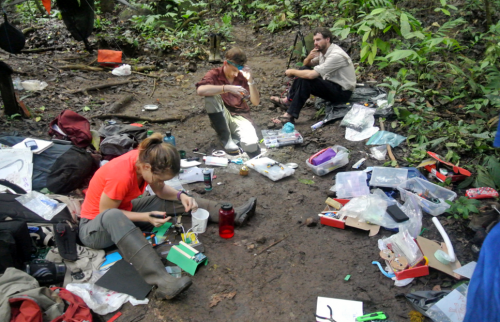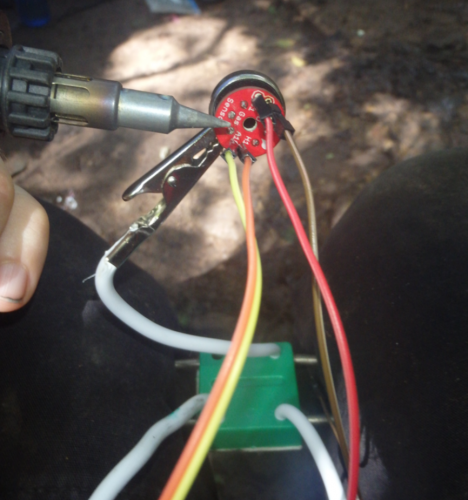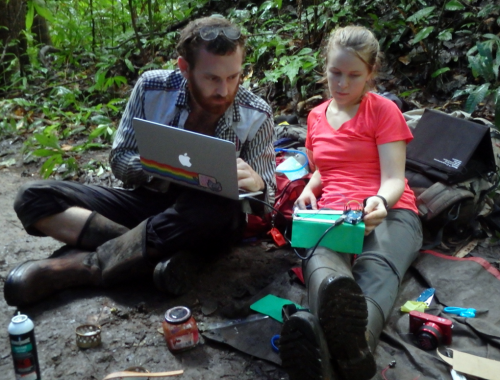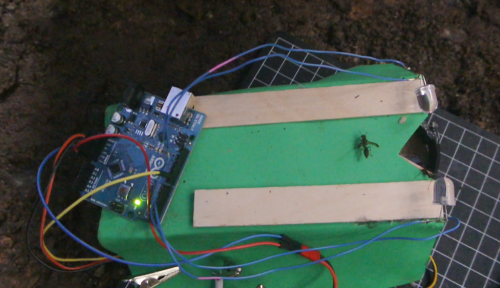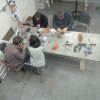The Hiking Hack is the first of a proposed series of research expeditions led by Andrew Quitmeyer, a Ph.D. researcher at Georgia Tech, investigating the role of situated design for wild animal interaction. This workshop trekked through the Panamanian Rainforest (with some SparkFun gear!) to explore how context shapes the crafting of technology and to probe the limits of constructing and utilizing DIY physical computing systems in harsh environments.
From Andrew:
My goal is to lead a series of "Hiking Hackathons" across various ecosystems throughout the world; I research how field biologists use digital technology. In my research, I look to discover techniques with field biologists for crafting inexpensive sensors and tools specialized to their own specific target ecosystems.
Digital Technology is changing the way we do science, but almost all this innovation targets and is built within the laboratory. In contrast, comparatively fewer research tools are being developed with field biologists, and within proximate feedback to their experimentation in the wild. To confront this problem, I gathered funding for, and lead an expedition we called the Hiking Hack. I assembled a diverse crew of biologists, documentarians, and hackers, for a transect across Panamanian Neotropical rainforests. We set up a basecamp hackerspace midway through the expedition, and using only the tools we could carry in, built instruments and robots to probe the behavior of nearby animals.
Budget:
My original Hiking Hack expedition had a shoestring budget of $1500 which I funded through small art grants and personal cash.
- $17,000 for equipment (Hiking, Hacking, and Documentation Gear) (If you would like more details about specific equipment, like sensors, drones, etc… just ask!)
- $33,000 / 5 = $6,600 per expedition Per Expedition Budget:
- $4,500 Travel (Personal, Scholarships)
- $600 Permits and Fees
- $800 Food
- $700 Documentation and Editing
On top of the standard hardships of living in and traversing little known jungle routes, came the additional challenges of carrying extremely heavy gear, teaching first-timers electronics, and building in low-light conditions. There were many problems also atypical of your average hackathon, such as bullet ant stings, venomous snake encounters, contagious infections, and even an army ant raid in the middle of a workshop. Despite these complications, the Hiking Hack was successful and taught us an incredible amount about packing technology, power requirements, forest crafting, weather proofing, and animal interaction.
I plan to carry out five different hacking hikes around the world. We will hack through a diverse range of biomes such as deserts, tundra, taiga, grasslands, and rainforest. Everything in this series will be thoroughly documented and shared as open hardware and software licensed into the public domain, so that others can learn and contribute to these ideas.
The success of the first hiking hack has led talented volunteers from various fields to sign up for the next iteration. Hopefully we can all make these adventures happen!
